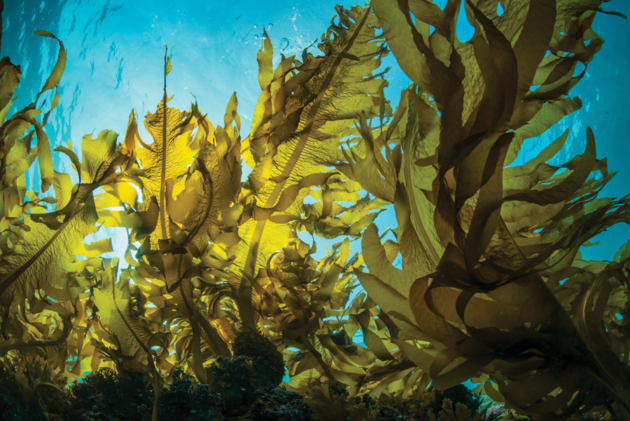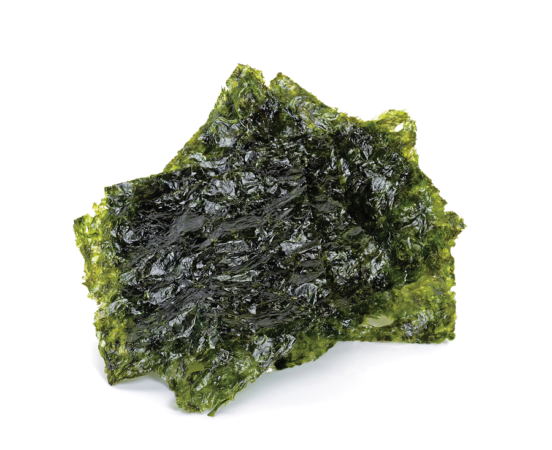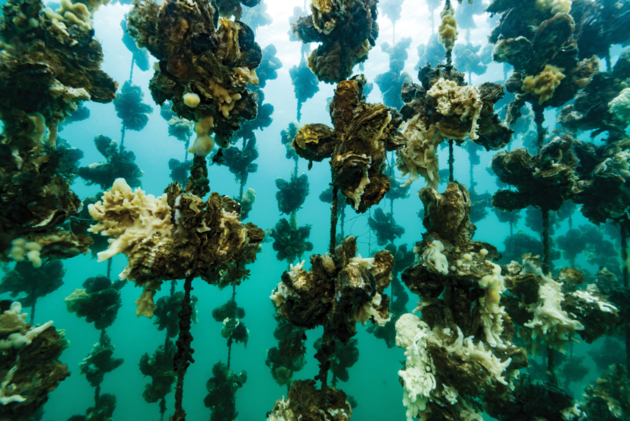
A global seaweed future
By Mark Juhasz
Exporting & Importing Editor pick seaweedCanada’s vast coastline and know-how can help it stay ahead in regenerative aquaculture
 Photo © divedog / Adobe Stock
Photo © divedog / Adobe Stock The desire and demand for nutrient-rich foods that have a positive impact on people and planet continues to grow, and Canada’s vast coastline is an advantage. Seaweed, algae, and shellfish will increasingly become a whole food, ingredient, soil enhancement, animal feed, or bioplastic option to consider. Further, Canada can meet both domestic demand and help a world confronting land use pressures, nutrient-deficits, and supply chain challenges from land-based production. Canadian ‘know-how’ in the seaweed and ocean farming sector can also weigh-in heavily as countries seek to build up their own production capacities.
The FAO estimates that by mid-century, global food production will need to increase by 70 per cent to meet the nutritional demands of a growing world population. Amidst the increasingly tangible impacts of climate change, stressed wild-caught fisheries, or the concerns surrounding ecosystem impacts of finfish aquaculture, the opportunity with seaweed and shellfish cultivation, sometimes called regenerative aquaculture, is gaining global attention.

Seaweed and algae contain many nutrients that are making them popular among consumers. Photo © boommaval / Adobe Stock
Benefits
Edible seaweed has been consumed around the world for thousands of years, particularly in east and southeast Asia (especially Japan) and maritime Latin America and Europe (Ireland and France) and by First Nations in North America. Experts believe there can be as many as 10 million species of algae (mainly microalgae), including well-known seaweed varieties such as wakame, kombu, dulse, sugar kelp and nori. This rich biodiversity is a resource for Canada, and an opportunity to connect entrepreneurs with marine scientists and Indigenous communities.
The nutritional and culinary aspects of seaweed, kelp and shellfish are becoming more fully understood. Seaweeds contain vitamins, fibre, and trace mineral elements not attainable from land-based plants. Seaweeds rich in antioxidants fight free radicals and protect the body’s immune system, reducing inflammation and disease, while supporting gut health function with prebiotic characteristics. Seaweeds and algae can also serve to meet growing demand for animal-free omega-3 rich fatty acids containing DHA and EPA, both of which are critical to healthy brain function at all stages of life. A note of caution, though: Seaweeds can be high in iodine.
From a job creation, and economic development perspective, seaweed, algae, and shellfish are adept at producing high yields of biomass, use non-drinkable seawater, and grow on non-arable land. Seaweeds and algae also have broader economic use functions beyond that for human consumption. This includes animal feed, fertilizers and soil enhancers, and compostable bioplastic.

Seaweeds rich in antioxidants fight free radicals and protect the body’s immune system. Photo © khumthong / Adobe Stock
Seaweed and ocean farming can have important environmental benefits. As an effective carbon capture system, seaweed and shellfish production, given their often-rapid growth rates, can help to mitigate the rise of atmospheric CO2, while supporting aquatic life and cleaning the water in its surroundings. Seaweed consumes nitrogen and phosphorus, elements that can harm the oceans in large quantities. As climate and carbon financial markets gain more maturity, regenerative aquaculture offers a multi-benefit proposition. For example, the UN’s Ocean Stewardship Coalition developed in 2020 a Seaweed Manifesto, to emphasize that ocean farming of seaweed and shellfish should be considered, in part, as a carbon sink, and promoted as a nature-based climate solution.
Innovating with seaweed
To meet the prospects and opportunity of ocean farming, companies and organizations are stepping up with creative businesses to meet growing demand. In New England, ongoing research at the University of Maine connects seaweed, algae, and microalgae with food science and human nutrition. Companies like Springtide Seaweed and Atlantic Sea Farms bring to market products like air-dried kelp milled into powders as seasoning, or kelp ideal to add to smoothies. New York City-based Akua provides meat alternatives in the form of ground kelp that can be used for anything from burgers to meatballs and tacos.
In Europe, Havhost is a Danish member-driven organization promoting and developing regenerative ocean farming with communities along their coastline, growing everything from seaweed to mussels and oysters that use specially designed harvest towers and equipment. Havhost is focused on educational activities and learning experiences for its members. Netherlands-based North Sea Farmers is another member-led organization promoting and increasing the production of E.U. farmed seaweed, and now counts major companies like Unilever and Shell among its partners.

The UN recommends ocean farming of shellfish as a nature-based climate solution. Photo © daisuke kurashima/EyeEm / Adobe Stock
In Canada, B.C.-based Ocean Regenerative uses seaweeds as biostimulants and soil conditioners. According to the company, the development of the sector depends on well-trained personnel, technicians, scientific researchers, and entrepreneurs working with financing organizations, institutions, and investors. Testament to this on Canada’s East Coast is New Brunswick-based Atlantic Mariculture that has been harvesting dulse, a type of seaweed, for consumers since 1974.
GreenWave, founded by Newfoundland-born Bren Smith, is an organization intent on training thousands in regenerative ocean farming using a polyculture method of multiple sources of food production that includes shellfish and seaweed, set on plots of ocean acreage in relatively shallow waters. GreenWave claims that with access to a boat, equipment and a $20,000 to $50,000 investment, companies can be established. Smith and GreenWave are working with communities in Atlantic Canada, as well as with First Nations on Vancouver Island.
Export potential
This leads to the question of Canadian leadership in the ocean and seafood economy, both for domestic production and consumption, but also for export. Canada is uniquely positioned between Asian, European, Latin American, and U.S. markets on all coasts. Canada can build a combination of scientific research in marine biology, food science, nutrition, with application of traditional Indigenous marine food knowledge. Seaweed, algae, and microalgae have been used in food applications for years, but there’s renewed vigour from development, health, nutrition, and sustainability perspectives.
Canadian management systems and applied technologies can provide further context for leadership in ocean farming. Canadian organizations need to deliver quality experiences, and foods that are tasty, nutritious and provide value for the cost. Public and private investment will be needed to advance the sector, and update regulations, policies, and incentives. This will require determined and informed dialogue, as concerns are being raised about the impact of fish farming on ecosystems. There is also a significant current of ‘re-shoring’ taking place in many nations as economies try to grapple with food inflation. In this context, Canada will need to think carefully which seaweed markets are developed domestically, and which provide greater prospects for export be it seaweed products, packaged goods, nutritious ingredients, or technical applications. For example, the U.S. has the ninth largest coastline in the world, but ranks 16th in farm-raised seafood production, and imports 85 per cent of its seafood, clearly an ongoing opportunity for Canada. With major federal initiatives such as Canada’s Ocean Supercluster, and co-ordination with the Department of Fisheries and Oceans, along with regional and provincial governments in maritime Canada, the prospects for a rising global opportunity are there.
Mark Juhasz is CEO and founder of Harvest Insights. He has more than 20 years of experience in the agri-food industry. He can be reached at www.harvestinsights.com.
This article was originally published in the October 2022 issue of Food in Canada.
Print this page